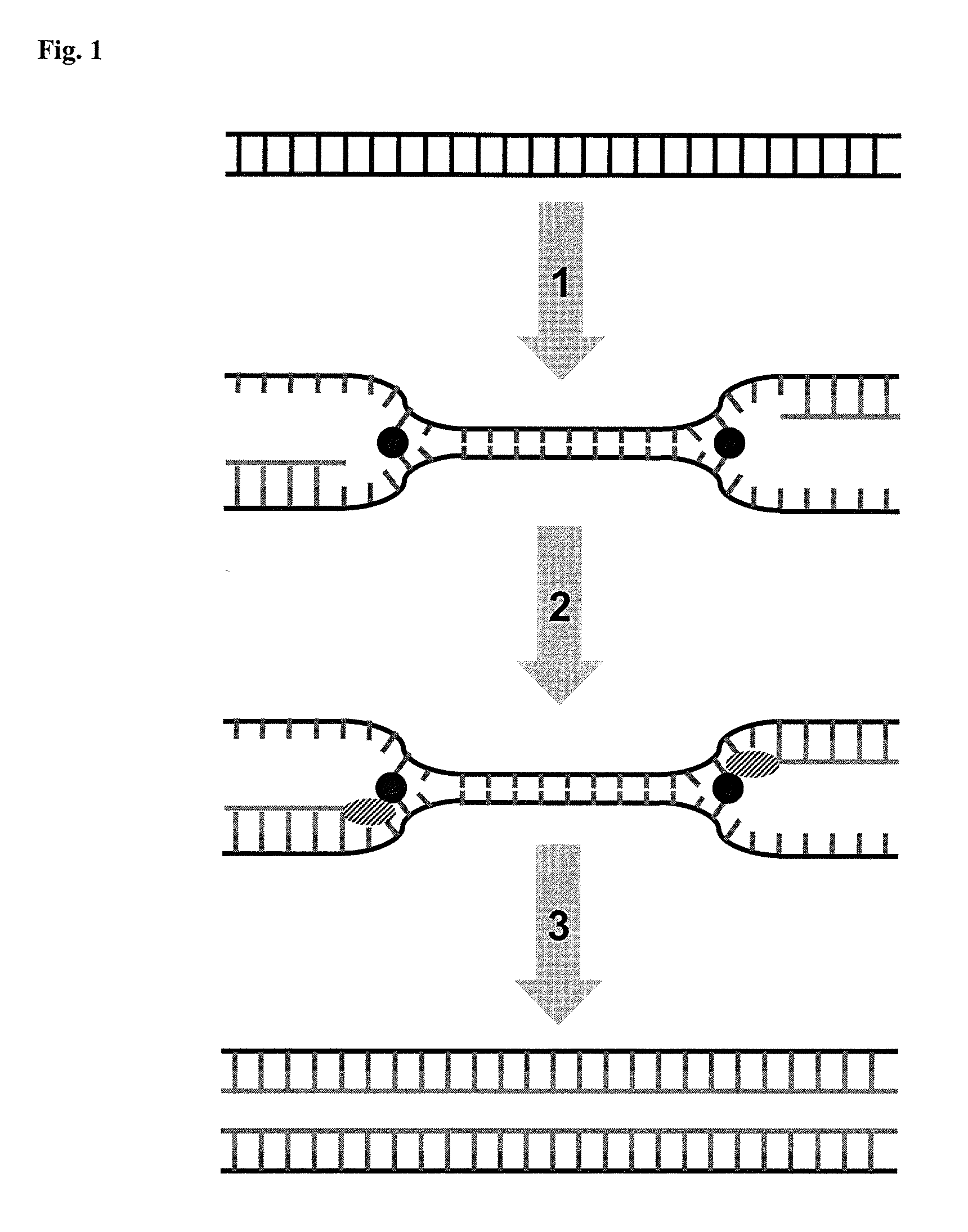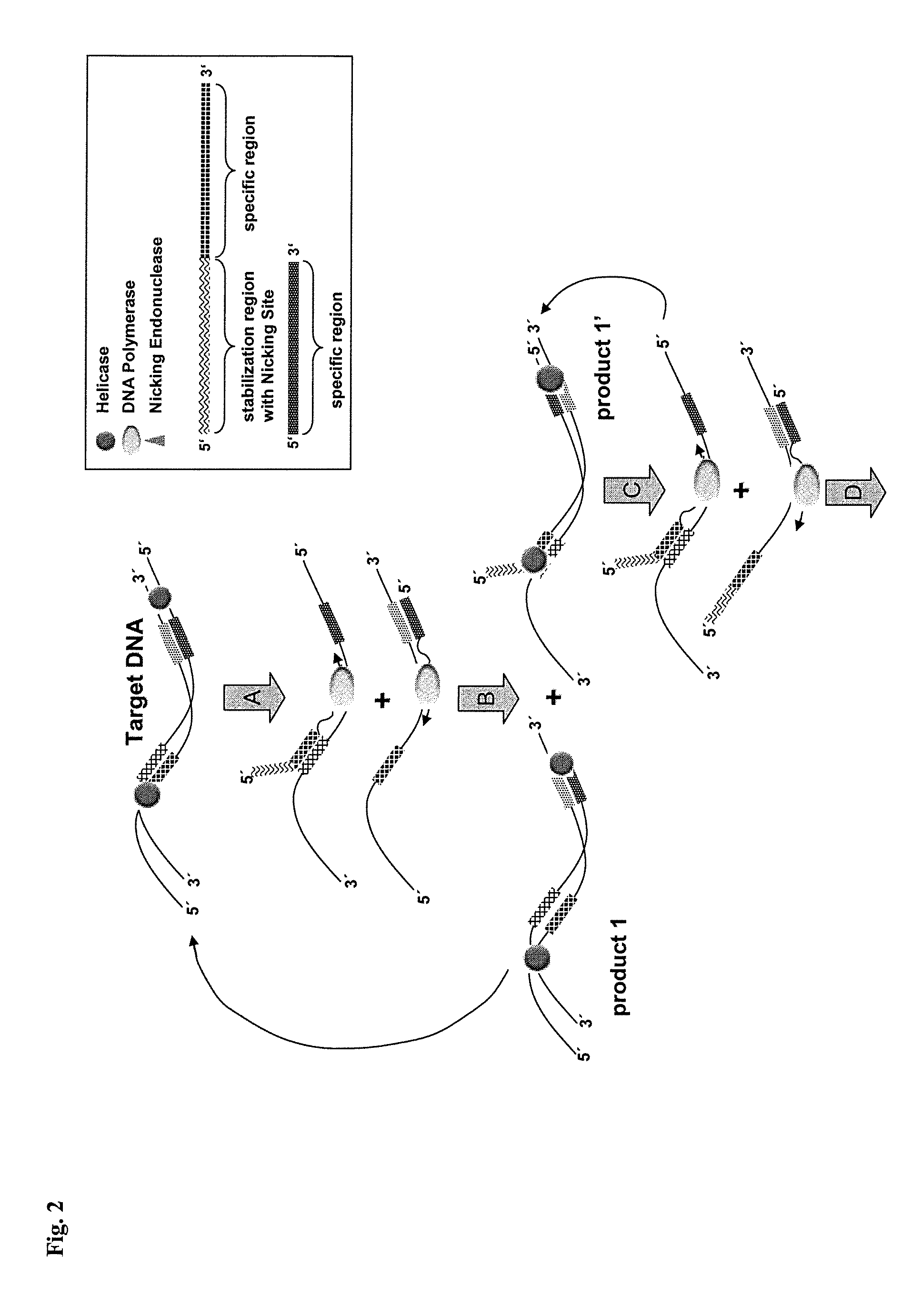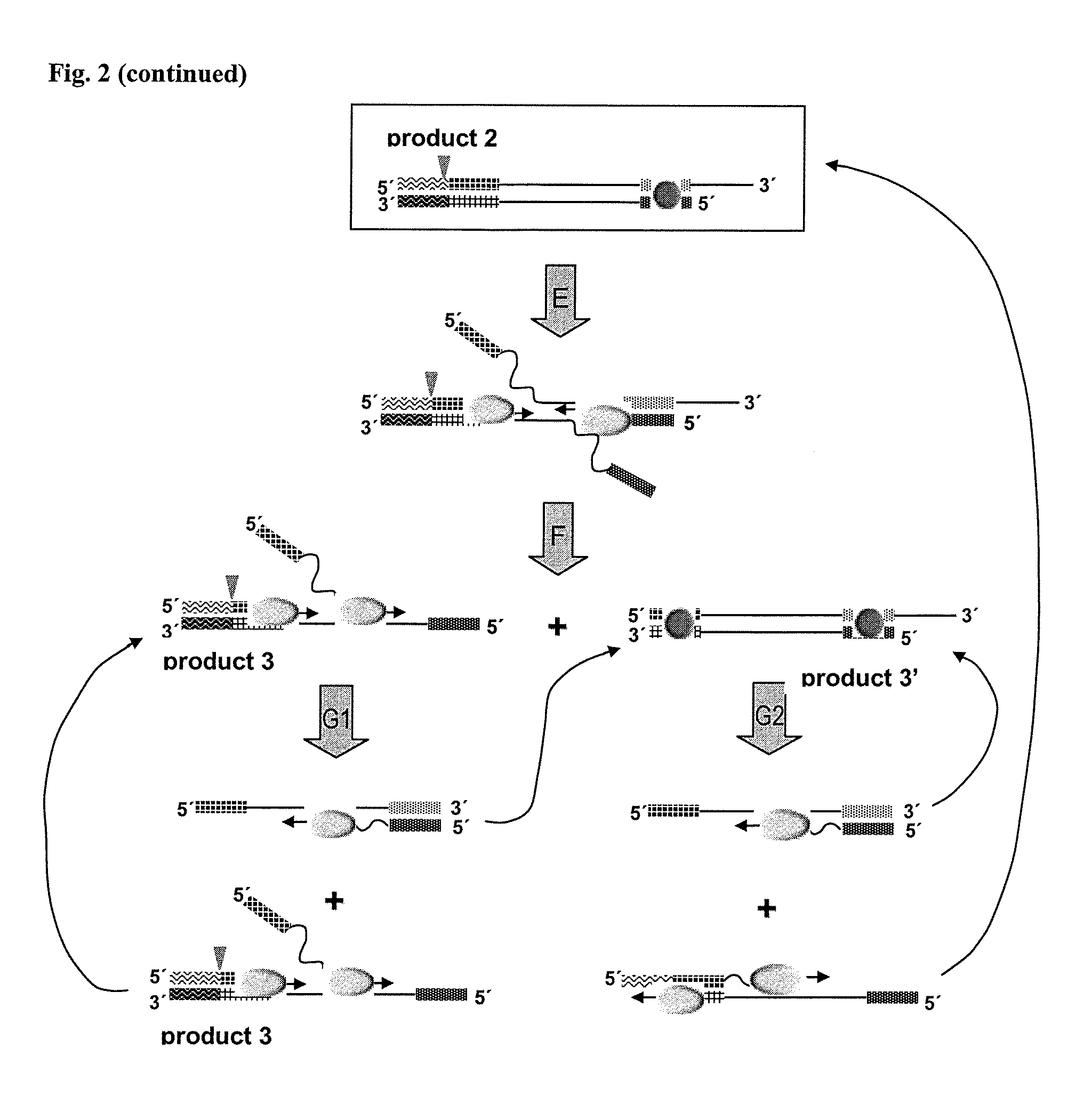Helicase dependent isothermal amplification using nicking enzymes
a technology of isothermal amplification and nicking enzyme, which is applied in the field of biochemistry, can solve the problems of limited to relatively short template sequences, complicated reaction protocols, and low specificity of the above-described isothermal amplification methods, and achieve the effect of reliable specificity and amplifying longer template nucleic acids
- Summary
- Abstract
- Description
- Claims
- Application Information
AI Technical Summary
Benefits of technology
Problems solved by technology
Method used
Image
Examples
example 1
Nicking tHDA Using a Tagged Primer
[0133]In this example, a sequence (SEQ ID NO:1) from the porin gene of the Neisseria gonorrhoeae genome has been amplified and detected using standard tHDA and the nicking tHDA method according to the invention, respectively:
5′-ATTTGTTCCGAGTCAAAACAGCAAGTCCGCCTATACGCCTGCTACTTTCACGCTGGAAAGTAATCAGATGAAACCAGTTCCG-3′
a) Materials:
[0134]
TABLE 1Primers and probes for amplification and detection of SEQ ID NO: 1SequenceTmOligo ID(5′→3′)(NN)PorA F5ATTTGTTCCGAGTCAAAACAGCAAGTC63° C.(SEQ ID NO: 2)PorA R5CGGAACTGGTTTCATCTGATTACTTTC62° C.(SEQ ID NO: 3)PorA5_VD56-FAM / / CGCCTATACGCCTGCTACTTTCACG / / BHQ168° C.FAM(SEQ ID NO: 4)porA_NSCGGGGCGTCTGGAAGGCGCATTCCGGAACTGGTTTCATCTGATTACTTTC(SEQ ID NO: 5)Tm: melting temperature; standard tHDA: primers PorA F5 and PorA R5, probe PorA5_VD5 FAM (labeled with 6-FAM and BHQ1); nicking tHDA: primers PorA F5 and porA_NS, probe PorA5_VD5 FAM (labeled with 6-FAM and BHQ1)
TABLE 2Premix 1 for standard tHDA and nicking tHDA of N. gonorrh...
example 2
Nicking tHDA Using an Untagged Primer
a) Target Sequence
[0166]The target sequence (SEQ ID NO:6) is derived from the mRNA of the human p53 gene and comprises nucleotide residues 322 to 395 of sequence NM001126114.
[0167]For the design of a primer comprising a sequence recognized by a nicking endonuclease, the original sequence of the reverse primer HDA-TP53rev has been modified, so that the primer sequence HDA-TP53rev7 was created. This introduced a recognition sequence for the enzyme Nt.BstNBI (see FIG. 7).
TABLE 4Primer sequences for the amplification ofPrimer IDSeq IDSequence 5′→3′HDA-TP53forSEQ ID NO: 7ATTTGATGCTGTCCCCGGACGATATTHDA-TP53revSEQ ID NO: 8CATTCTGGGAGCTTCATCTGGACCGTHDA-SEQ ID NO: 9CATTCTGGGAGTCTCATCTGGACCTGTP53rev7
b) Amplification of p53 from Human cDNA
Materials:
[0168]For this reaction, human RNA has been transcribed into cDNA. For the tHDA reaction cDNA from 10 ng RNA has been used. The reaction has been performed in the buffer (reaction mix) outlined in table 5.
TABLE 5R...
PUM
| Property | Measurement | Unit |
|---|---|---|
| temperature | aaaaa | aaaaa |
| temperature | aaaaa | aaaaa |
| temperature | aaaaa | aaaaa |
Abstract
Description
Claims
Application Information
 Login to View More
Login to View More - R&D
- Intellectual Property
- Life Sciences
- Materials
- Tech Scout
- Unparalleled Data Quality
- Higher Quality Content
- 60% Fewer Hallucinations
Browse by: Latest US Patents, China's latest patents, Technical Efficacy Thesaurus, Application Domain, Technology Topic, Popular Technical Reports.
© 2025 PatSnap. All rights reserved.Legal|Privacy policy|Modern Slavery Act Transparency Statement|Sitemap|About US| Contact US: help@patsnap.com



